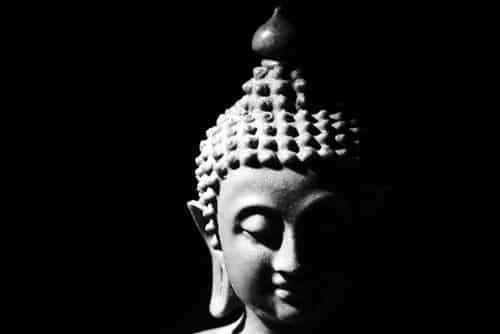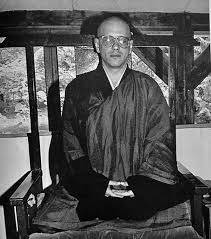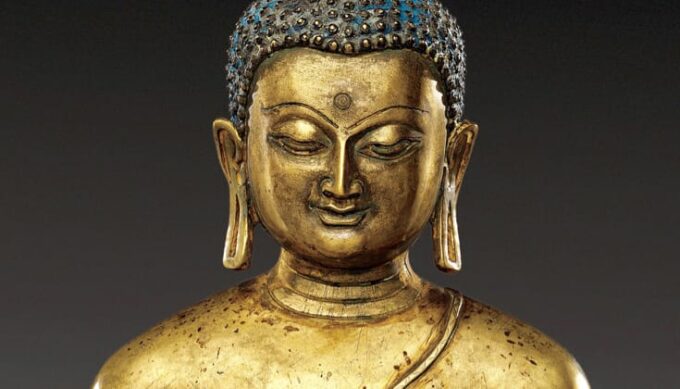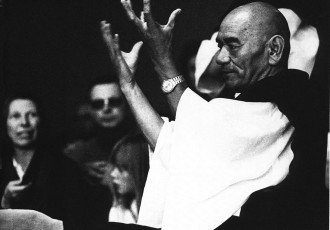In his first sermon in the Deer Park, Gotama tells us what dukkha means:
“This is dukkha: birth is painful, aging is painful, sickness is painful, death is painful, encountering what is not dear is painful, separation from what is dear is painful, not getting what one wants is painful. This psycho-physical condition is painful.”
In the twentieth chapter of the Dhammapada, we read, “All conditioned things are dukkha.” In other words, dukkha is part of the fundamental nature of our phenomenal world. It’s clear that the noble truth of dukkha means much more than the subjective experience of “suffering.”
Dukkha, or duhkha (Pali, Sanskrit) is the second of the Three Marks of Existence in Buddhism and is subject to the Four Noble Truths. Although the is no satisfactory equivalent English word for dukkha it has been variously translated as suffering, unsatisfactoriness, frustration, unhappiness, anguish, dis-ease, (opposite: sukha, ease, well-being). It is essentially transience and all that arises from the experience of transience. For the Buddhist, the primary characteristic of sentient existence is the fact of dukkha.
The Buddhist tradition emphasizes the importance of developing insight into the nature of dukkha, the conditions that cause it, and how it can be overcome. This process is formulated in the teachings on the Four Noble Truths. In the first of the Four Noble Truths it is said: “there is dukkha”; this means the truth about suffering is the fact of its universality. The other three Noble Truths explain the source of dukkha, the means of eliminating it, and the method of executing its cessation.
The Buddha discussed three kinds of dukkha:
- Dukkha-dukkha (pain of pain) is the obvious sufferings of physical pain, illness, old age, death, the loss of a loved one.
- Viparinama-dukkha (pain of alteration) is suffering caused by change: violated expectations, the failure of happy moments to last.
- Sankhara-dukkha (pain of formation) is a subtle form of suffering inherent in the nature of conditioned things, including the skandhas, the factors constituting the human mind. It denotes the experience that all formations (sankhara) are impermanent – thus it explains the qualities which make the mind as fluctuating and impermanent entities. It is therefore also a gateway to anatta.
Traditional Buddhists define dukkha in a number of different ways:
- In the Four Noble Truths dukkha is represented as birth, old age, sickness, and death; grief, sorrow, physical and mental pain; involvement in what one dislikes and separation from what one likes; not getting what one wants; in summary, the five groups of grasping (or craving) are the source of suffering.
- Threefold dukkha is ordinary physical and mental pain, that is, pure or intrinsic suffering, suffering as the result of change, suffering owing to the impermanent and ephemeral nature of things; and sufferings due to the formations of individuals and their temporal or finite states.
- It is maintained that all transient beings, whether gods, humans, pretas (deceased), animals, or inhabitant of hell, are subject to dukkha. Gods suffer the least since they are in a hierarchy of different beings, and the inhabitants of hell the most.
According to Buddha, the most significant aspect is not the acquisition of happiness. The most significant point is to reach the end, the cessation, the extinction, the disappearance of sorrow. The alternative, the solution, with respect to the question of suffering, is its absence. For this reason, the teaching of the Buddha does not tell us so much about happiness, but much more about the cessation of pain – nirodhā. According to him, there is not a lot that we can do. Because we cannot remove suffering. Suffering is not something that we can catch, isolate, separate and remove.
According to the Buddha, to reach the end of suffering is just sufficient to stop creating it, to stop producing it. Since one cannot remove it, it is necessary to avoid manufacturing it. To stop manufacturing suffering, it is simply enough to root out its cause. Exactly like with a fire, we cannot take it and remove it. If we want to extinguish a fire, we must stop the cause of fire; we must eradicate that which is responsible for the presence of fire. What is responsible for the presence of fire, is that there is a fuel which is heated. It burns and thus gives fire. In the same way, if we want to reach the end of the sorrow, pain, we cannot really catch this sorrow, this pain, put it in a net and throw it in the bin. However, we can stop feeding it. We can stop the multiplication of the causes which bring this sorrow.
Buddha gave us very clear explanations, which are technically quite easy to put in practice, to stop producing the causes of our miseries, our difficulties, our suffering. He gave us The Eightfold Path, which is a practical and systematic way out of ignorance, eliminating dukkha from our minds and our lifestyle. The Eightfold Path is often divided into the three categories of wisdom (right view/understanding, right intention), ethical conduct (right speech, right action, right livelihood) and mental cultivation (right effort, right mindfulness, right concentration).
To free ourselves from suffering fully and finally we have to eliminate it by the root, and that means to eliminate ignorance. Since ignorance is a state of not knowing things as they really are, what is needed is knowledge of things as they really are. Not merely conceptual knowledge, but perceptual knowledge. This kind of knowing is called wisdom (panna). Wisdom helps to correct the distorting work of ignorance. It enables us to grasp things as they are in actuality, directly and immediately, free from the screen of ideas, views, and assumptions our minds ordinarily set up between themselves and the real.
photo credit: underthemoonshadow




